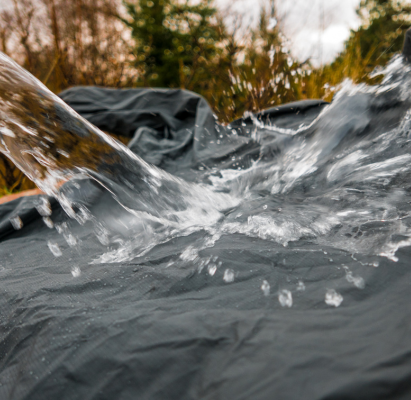
Waterproof VS Water Resistant
There are plenty of raincoats out there to choose from, but they don't all offer the same level of protection. It's not always obvious, either.
Waterproof, showerproof, water-resistant and water-repellent, these are some of the terms you'll come across on your quest for waterproof clothing, but how are you supposed to know which type of jacket is right for you?
Well, that's what this guide is for! We're going to explain (in layman's terms) how to distinguish between the varying levels of water protection.
Waterproof vs Water Resistant - What's The Difference?
What Does Waterproof Mean?
When a garment is waterproof, this means that no water can penetrate it. This isn't just accomplished by the durable water-repellent treatment (DWR) or materials to which the clothing is made out of, but also how the garment is constructed.
Whilst the material and protective treatment does most of the work fending off the rain, the vulnerabilities then lie with the seams of the jacket, as water will still find its way to seep in through the holes created by stitching.
That's why in order to be classed as fully waterproof, waterproof clothing must have taped seams. The term "taped seams" refers to a thermoplastic tape used to cover the areas where the garment has been stitched together, it's applied using a combination of heat and pressure.
Garments labelled as "Waterproof" offer the most protection against water compared to the likes of showerproof, water resistant and water-repellent clothing.

How Waterproof Is A Waterproof Jacket?
Waterproof jackets (or any waterproof garment, for that matter) are measured by what's known as a hydro-static head rating. This rating (in millimetres) indicates the level of waterproof protection the jacket provides.
In order to be considered waterproof, the jacket must have a hydro-static head rating of at least 1,000. A lower level rating of 5,000 will provide protection against light rain, whereas a much higher rating of 20,000 will protect you against heavier, torrential rain.
Here at Regatta Great Outdoors, we've developed our own waterproof material named Isotex, which we use in our range of waterproof jackets, waterproof trousers and waterproof walking boots. We have varying grades of waterproof protection applied to our Isotex clothing, which you can identify below:
- 3,000mm - Isotex - Fabric can resist 3,000mm of water pressure
- 5,000mm - Isotex 5000 - Fabric can resist 5,000mm of water pressure
- 10,000mm - Isotex 10,000 - Fabric can resist 10,000mm of water pressure
- 15,000mm - Isotex 15,000 - Fabric can resist 15,000mm of water pressure
- 20,000mm - Isotex 20,000 - Fabric can resist 20,000mm of water pressure
What Does Water Resistant Mean?
Water resistant clothing works in a similar vein to Showerproof. It's the lowest form of water protection as this type of clothing typically only has a water protective treatment applied to it, as opposed to the taped seams and more technical specification of a waterproof garment.
Water-resistant clothing often needs re-treating once in a while in order to maintain a good level of water protection. You'll be able to see if your water resistant clothing is currently working by looking at how water behaves when it comes into contact with the garment.
If it's working correctly, you should see the water bead up into little droplets - a little bit like how cars look when they've been rained on if they've been waxed before-hand.
Is Water Resistant The Same As Water Repellent?
Water repellency refers to how well a garment deflects water after a durable water repellent treatment (DWR) is applied.
Whilst it does sound synonymous with water resistant clothing, the term "water repellent" is simply a measurement and can be used to measure both water resistant and waterproof clothing alike.
What's Better, Water Resistant or Waterproof?
Overall, a fully waterproof garment will perform better than a water resistant one in most rainy conditions, especially the level of rain we encounter here in the UK. However, water resistant clothing is often considerably more affordable than top quality waterproof clothing, which makes it an attractive choice if you only need light protection from the rain.
